If Chickweed could sing a song it would be “I gotta be me” (from the broadway musical Golden Rainbow.) Or as the Portuguese chef extraordinaire Emeril Lagasse would say, the plant is “happy.” I had classes Friday through Sunday and one star of the show was Chickweed. No doubt books have been written about this seasonal visitor so I won’t descend into repetition. It is here and easy to identify. Look for a new lime green plant growing in clumps. It has a stretchy inner core, a line of single hair that shifts 90 degrees at each set of leaves, and tastes like corn silk. If you have another plant now that you think is chickweed that has a square, translucent stem and smells like cucumber when crushed, that’s Pellitory, also edible. Take close look at the picture above. You will see an occasional white blossom. Chickweed has five-petaled blossoms but because they are deeply incised they look like ten petals. Pellitory has bashful small green blossoms as it is wind pollinated and does not have to attract insects for pollination.
Eat Your Christmas Tree? Well… maybe… The most common Christmas tree in North America is the fir. When I was a young man, back in the Dark Ages before the Internet, we used to scout all year for potential Christmas trees. Haven chosen one then we’d wade through the deep snow to cut it down and drag it home. Among the firs used for Christmas the most common is the Fraser. Fortunately all true firs (Abies) can be used the same way. The inner bark, the cambium, is edible. Branch tips can be used for tea. In some species the sap is used for gum, the deciding factor being flavor more that can it be done or not. This is also presuming any tree you’re considering consuming has not been sprayed or fed preservatives which reminds me… Dick Deuerling, Forager Emeritus who left us in July at age 92, said he recycled his Christmas wreaths which were made from American Holly. It makes an anti-oxidant, non-caffeinated tea (if it has not been adulterated by various commercial chemicals.) Another possibility for Christmas is to make an annual tannenbaum tree out of a rosemary bush or the like.
The Third Annual Urban Crawl was held in Winter Park last Friday. Close to a dozen showed up for the free walk about the town looking at edibles. The weather cooperated by warming up into the lower 80’s. Folks came from as far away as Jacksonville and there were some very knolwedgable people in the mix, keeping me on my professional tippy toes. I had a great time and want to thank you all. By my count we looked at about 65 different species, not bad for downtown and December 20th. Alphabetically the list went from Alpinia zerumbet, a medicinal, to Zamia Floridana, deadly if not prepared correctly. For me the treat is Natal Plums, one of those tasty fruits that inexplicably has never made it as a commercial success.
While on the Urban Crawl one couldn’t help but notice some potted edible flowers particularly Begonias and Violets. Begonias blossoms make attractive and tart additions to salads. The leaves can be fried making (when seasoned) a salty, sour crisp. My favorite is to whip the leaves into a paste with a little cream cheese and sugar for a tart filling. Absolutely delicious. You can read about Begonias here. As for violets they are a nice, mild additions to salads but you can also make a violet syrup to keep that scent and flavor past their season. You take all the blossoms you’ve collected and put them in a pan with just enough water to cover. Heat until they begin to simmer. Turn off the heat, cover, and let them sit overnight or eight to twelve hours. Strain the liquid. Then melt an equal amount of sugar as you have water and add to the violet water (or not if you like.) Bottle. Enjoy. To read more about violets go here.
This week produced a young patch of Sonchus oleraceus, or the Common Sow Thistle. It’s an excellent green which shows up on the spring and early summer in northern climes but in the winter locally. While it is truly excellent table fare contrast that with this comment: “Sow thistle has been a problem in western Canada for over 70 years. Now, due in part to reduced tillage practices and the introduction of new crops, the ongoing battle against sow thistle is heating up.” It is also an invasive species in Australia. How does a very edible plant become an invasive species? People forget to eat it, literally. I wonder if that was the case during the Great Depression? There was a saying then: “Dirty dishes means you had something to eat.” Other common names for the sow thistle include annual sow thistle, colewort, common Milk Sow-thistle, hare’s colewort, hare’s lettuce, laiteron commun (French), laiteron maraîcher (French), laiteron potager (French), lastron (French), leita ruga (Portuguese), milk thistle (English), milky tassel, pualele, serralha branca (Portuguese), serralha macia (Portuguese), smooth sow thistle (English), soft thistle, swinies, and thalaak.
Botany Builder #32: Bole (said bowl) has two common meanings, one of which is used in botany. A bole is the trunk of a tree, usually referring to a substantial tree, not a wispy shrub. It is most commonly found in forestry books when writers get tired of using “trunk.” The origins of “bole” are fuzzy. The word “bole” itself is Middle English but seems to come from the Icelandic bolr meaning trunk or torso. In German bohle means a thick plank. The English word “bulwark,” which means fortification, is a German combination of bohle and werk meaning bole work or a lot of trunks, as in a man-made barrier, a wall no doubt used against the Romans. The other bole is from the Dead Latin bolus meaning a lump… That might make a handy insult… That bole refers to a variety of clays for making things like pots and tile. While that bole is used now to mean “brown” the color is actually the color of terra-rosa, clay pots with a red tint rather than an orange tint.
The Green Deane Forum is more than just about foraging. Preserving food as well as growing it is also on the discussion menu along with other great ideas and tips. Here’s one you missed if you didn’t visit the forum this week: Bottle scallions. You make holes (various ways) in a soda bottle or the like, fill with potting soil and an onion bulb for each hole. Water lightly from the top and keep it near a winter window and you have scallions. On the forum we also chatted about mistletoe, reindeer eyes (they change color) cassava wine, chestnuts not roasting on an open fire, and plant identification. I also usually add something about wild mushrooms as well. If you’re looking for a wholesome place to talk about foraging or even the news of the day look at the friendly community on the Green Deane Forum. To join click on the graphic on the right hand side of this page: Join The Green Deane Form.
What is foraging? Animals have always foraged for food. But the word associated with the practice came about during Roman times. Soldiers were sent out to find food for their necessary animals. Later “foraging” included looking for food for the soldiers as well. In agricultural areas this probably also meant stealing cultivated crops. In fact being able to forage for food was so important often huge areas were burned to prevent an opposing army from later foraging on the same land effectively keeping the army from moving for more than a season. The modern word ‘foraging” comes from the Middle English word fourrage. That is a derivative of fuerre a Germanic word for fodder which is coarse food for livestock. What we forage for now is a bit of a linguistic debate. Generally forageables are things that can be gathered (and were traditionally gathered by women) such as plants and shellfish. Hunting and fishing, usually done by men, are not foraging per se though they, too, provide wild food.
Upcoming Classes:
Saturday, December 28th, Red Bug Slough Preserve, 5200 S. Beneva Road, Sarasota, FL, 34233. 9 a.m.
Sunday, December 29th, Bayshore Live Oak Park, 23020 Bayshore Rd., Port Charlotte, FL 33980, 9 a.m.
Sunday, January 5th, John Chestnut State Park: 2200 East Lake Road, Palm Harbor, FL 34685. 9 a.m.
Though your foraging may drop off during the winter it’s a great time to study wild edibles with my nine DVD set. Each DVDs has 15 videos for 135 in all. They make a great gift for your foraging friend. Order today. Some of these videos are of better quality than my free ones on the Internet. They are the same videos but many people like to have their own copy. I burn and compile the sets myself so if you have any issues I handle them personally. There are no middle foragers. And I’m working on adding a tenth DVD. To learn more about the DVDs or to order them click here.
Because there are five Tuesdays this month there will be no newsletter next week, December 31st. Time to take a mini-vacation from the keyboard. Enjoy the holidays.
This has little to do with foraging but I found the picture interesting:

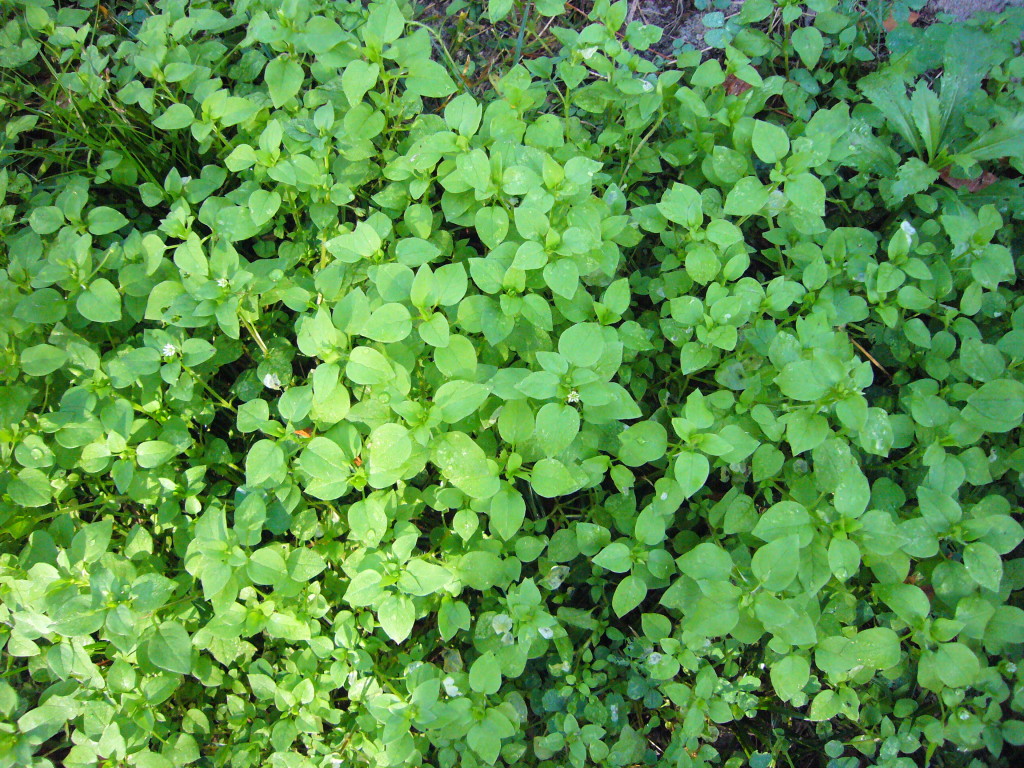
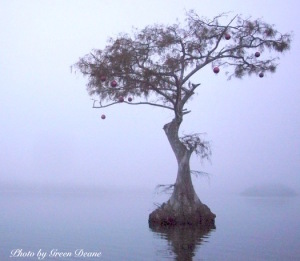
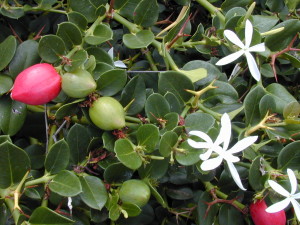
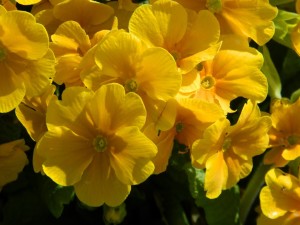
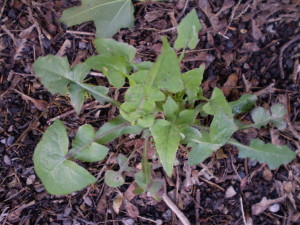
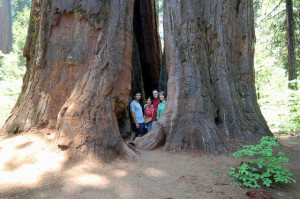
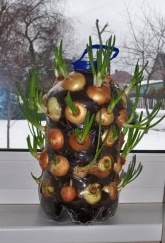




Always a pleasure reading the articles.
i had no idea about the chic weed, it grows all around our house just about year around, in central Texas
Merry Christmas
Tannebaum! 🙂
So many memories relating to the above Christmas tree hunt. Including having to drag it through the snow. Thanks for the smile.
And thanks for all your fabulous, informative sites. Especially the mushroom ones. 🙂
Frohe Weihnachten und ein gutes Neues Jahr!
Funny. I just noticed the sow thistle popping up in my yard this week. Sarasota.
It may be the first time for such a tropical country like mine , Sudan, to host a friend in need as “ Chickweed”.We experience great “great depressions” and as said : clean dishes means one has nothing to eat. I’m very familiar with “Chickweed”; I’ve tasted , cooked and eaten it. Because of the diverse uses of the plant, I thought I’ll have an attempt to grow some seeds bearing in mind the delicacy it requires specially climate wise. Thus , under our coldest December, I have scattered some seeds among Fennel seeds and covered both of them with a thin layer of the same clay soil. After one week many seedlings of fennel appeared. However, it took three days more for only two seedlings of Chickweed to see the Sudanese bright sun. After considering the matter over to check for any mistake in my procedure, I reckoned that I should have not buried those very tiny seeds of Chickweed under the same thickness of soil as the much bigger Fennel seeds; still I’m expecting more of these friends to come out of the ground and enjoy our “dazzling” sun.
Farouk, have you thought of participating in the Green Deane Forum?
Thank you; I hope I can.
For years I was too poor to buy a tree. We would scout cedar trees on the road right-of-ways for weeks and when it was time, I have my wife drop me off in the dark with nothing but an ax and I would cut it down watching for cars and in ten or so minutes she would pick up me, the tree and the ax. I did this for five or more years. There was a certain amount of adrenaline involved. It made the tree just that more special.
I’m continually fascinated by what I learn on your site. Having been raised in the Chicago suburbs, my knowledge of edible wild things is pretty pathetic. We’ve been living in the country in central IL for 15 years now, raising some small farm animals and gardening, and I’ve been slowly learning about the edible weeds that I’ve killed for so long. I’ve incorporated what I learn on your site into our homeschooling so my children will learn about all the edible things around them and can teach others.
The sow thistle is another new one. I know they are in my yard, but I have always thought it was just a funny-looking dandelion, or a different variety of dandelion. I’ve only actually harvested dandelion once or twice. We battered and fried the flowers – yum! I have put the greens in a salad once. Converting my family to eating weeds is a slow process. The goats and pigs love them though! I’m glad to see that the funny-looking dandelions are actually edible for us, too, as some of those flowers we fried may have actually been sow thistles, though we obviously didn’t die from them. Are sow thistles and dandelions related?
Thank you for your kind words. The sow thistle and dandelions are distantly related.